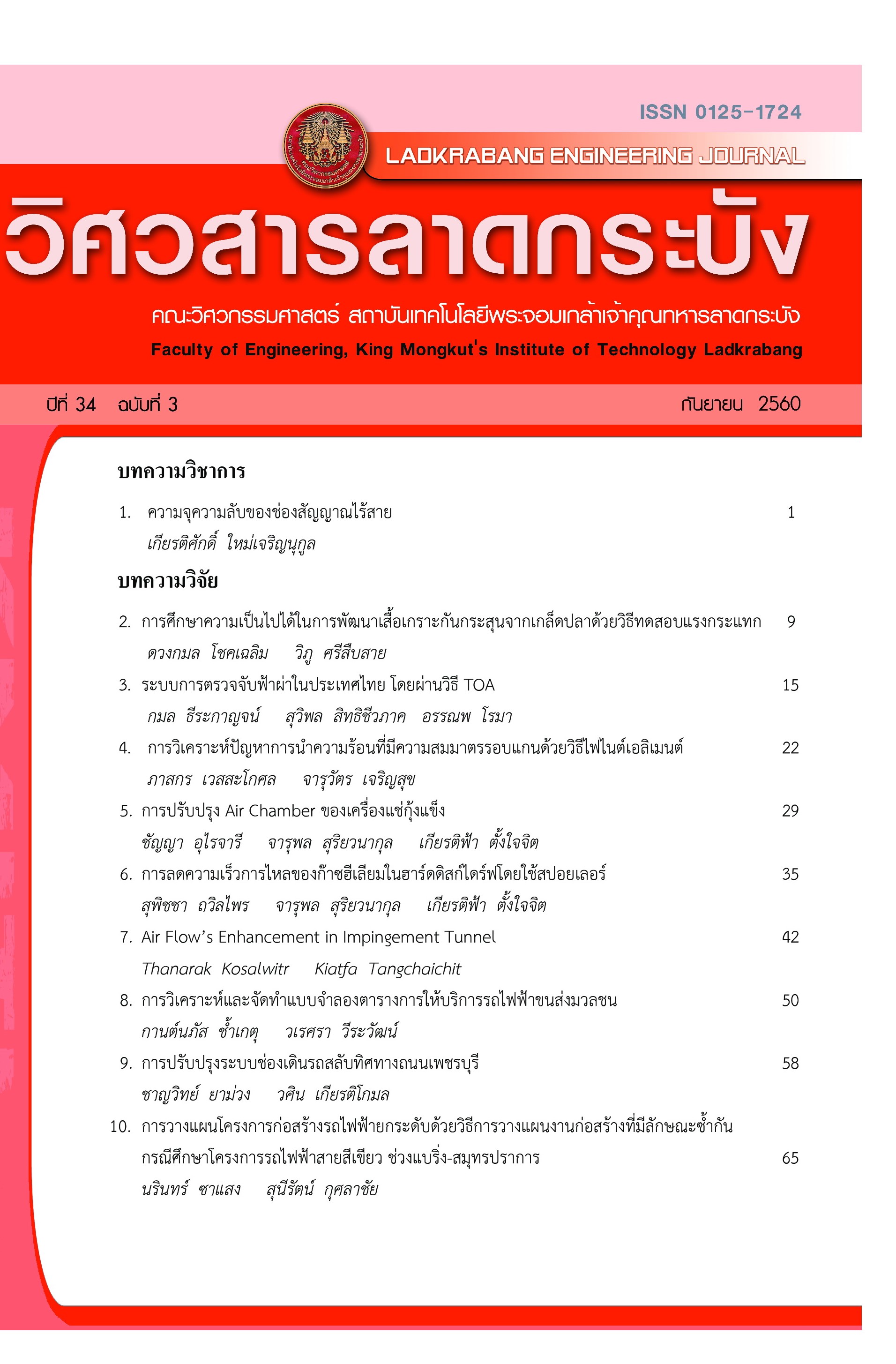Analysis of Axisymmetric Heat Conduction Problems Using Finite Element Method
Keywords:
Finite element method, Axisymmetric solid, Heat conductionAbstract
Heat transfer analysis for axisymmetric solid by using the finite element method is presented in this article. The method used to find the temperature distribution in solid is the Finite Element Method based on triangular element. This numerical method is more suitable than the analytical method in dealing with various types of boundary conditions and various shapes of solid. The accuracy of present method is assessed by comparing the calculation results of present method with the results from analytical method or commercial. Three test problems are presented in this article, namely the solid cylinder with uniform heat generation, the fuel cladding composite and the hollow cylinder with heat flux on inner surface.
References
[2] L.J., Segerlind, Applied Finite Element Analysis, Wiley, 1984.
[3] M.N., Ozisik, Heat Transfer A Basic Approach, McGraw-Hill, 1985.
[4] F.P., Incropera, and D.P., Dewitt, Fundamental of Heat and Mass Transfer, Wiley, 1996.
[5] R.W., Pryor, Multiphysics modeling using COMSOL: a first approach, Jones and Barlett Publishers, 2011.
Downloads
Published
How to Cite
Issue
Section
License
The published articles are copyrighted by the School of Engineering, King Mongkut's Institute of Technology Ladkrabang.
The statements contained in each article in this academic journal are the personal opinions of each author and are not related to King Mongkut's Institute of Technology Ladkrabang and other faculty members in the institute.
Responsibility for all elements of each article belongs to each author; If there are any mistakes, each author is solely responsible for his own articles.






